Introduction
In the mid-1970s, a defining fashion style known as punk emerged in the fashion industry. Fashion is known to begin with various ways in a particular section of the larger society. Punk started through a genre of British music known as Punk rock. In this case, fans of rock music began to develop their own style of dressing, promoted by new designers of particular types of clothes to define their identity. On many occasions, the styles were influenced by so many factors related to the politics of the day or particular socio-economic events. The popularity of Punk is attributed to the Rockers of the 1960s, who aspired to develop their own identity and a means in which they would form their own sub-culture and alienate themselves from mainstream society (Hart 2008).
Considered to have a diverse origin, the general agreement is that Punk emanated from a wave of new sub-culture of British society in the mid-1970s. Many entrepreneurs cum artists such as Vivienne Westwood and Malcolm McLaren operated a series of shops selling punk-designed clothes. These were years of social dissatisfaction defined by the people’s somewhat bleak future (Hart 2008). In fact, there was a lot of social dissatisfaction and the state was not able to control the emerging social pressure despite facing the threat of collapse. According to O’Byrne (2009, p.27), punk was the most extreme and nihilistic expression of aggressiveness against the state machinery, although it may have had just a few hardcore supporters. This paper discusses the origin of the Punk style with particular reference to the designs of Malcolm McLaren and Vivienne Westwood between (1974- 79).
Malcolm McLaren’s Early Life and Journey towards Punk Style
Malcolm McLaren’s life began one year after the end of World War II, 1946. Born to a Scot engineer father Peter McLaren and an Anglo-Jewish mother, Emily Isaacs, Malcolm experienced years of political and social tension in his life (Hawkins 2009, p.176). This is due to the political unrest perpetuated by disjointed political systems. Again, his parent’s separation when he was barely 5-years of age in 1948 worsened the situation and probably shaped his lifestyle and future career as would be shown in the emergence of punk style. When the parents separated, Malcolm found himself in the custody of his mother and a stepfather, a Jew by the name of Martin Levi (Hawkins 2009, p.176). Under the pressure from the English society that assimilated and ensured non-English people became invisible, Levi adopted the name, Edwards. His wife Emily had adopted the name, Eve Edwards. This is when he opened a clothing factory and named it Eve Edwards (Savage 1997, p.91). Interestingly, in 1971, McLaren dropped the name Edwards and took back his biological father’s name (Savage 1997, p.91). The young McLaren and his brother would later go to a Jewish school and then proceeded to a state grammar school in Britain.
McLaren’s family background is visibly expressed with an emphasis in terms of his Jewish origin. This minority background forced him to find out how he would adapt to the English society, which was a Gentile society (Savage 1997, p.91). The only way he would find identity was through fashion, laced with belief to find a sense of belonging. McLaren was quoted as saying: “Dressing up was always a big part of going out” (Savage 2001 p.93). It, therefore, followed that fashion formed a major part of McLaren’s life, meeting other fashion designers with whom he developed more interests in many styles. He spent a lot of time in entertainment joints, observing the youth culture and the dominant theme of the time (Savage 2001 p.93).
Vivienne Westwood’s Early Life and Journey towards Punk Style
Vivienne Westwood was born in 1941 in Derbyshire to a father Gordon Swire and a mother Dora Swire (Horyn 1999, p.2). This was during World War II, a significant period of time when states were at war with each other. At the time of her birth, the father was working as a storekeeper in the aviation industry, after leaving his previous job as a greengrocer (Barratt 2007). Her prime school years in the art industry began when she was a 17-year old girl. She registered at Harrow School of Art, where she decided to study and specialize in fashion alongside training to become a silversmith (Barratt 2007). However, her stay in the art school was never to last as she left just after a term, claiming that her status as a working-class did not match with art as a career (Barratt 2007).
But her life outside art was never to last. After her training as a primary school teacher, Vivienne involved herself again with art when she ventured into the jewelry business, through her stall as Portobello Road, London (Horyn 1999). She got married to Derek Westwood in 1962 and later got a son by the name Benjamin (Horyn 1999).
The Meeting between Westwood and McLaren
Westwood met McLaren and later remarried him, signaling the end of her marriage to Derek. The two artists lived together as Westwood continued with her teaching business until 1971 when she decided to take up the management of a boutique, Let It Rock (Stratton 2005). This was a boutique opened by the husband, McLaren. In the boutique, Westwood introduced unique and ‘out of this world’ types of designs, which attracted the attention of “bikers, fetishists as well as prostitutes” (Horyn 1999).
The couple’s interests in Punk style began when they introduced Punk designs, under their Sex Pistols stores. They became popular, Westwood making her own designs and selling to the designated customers. The Punk style attracted a lot of attention towards the mid-1970s and McLaren developed a lot of interest as an entrepreneur cum designer.
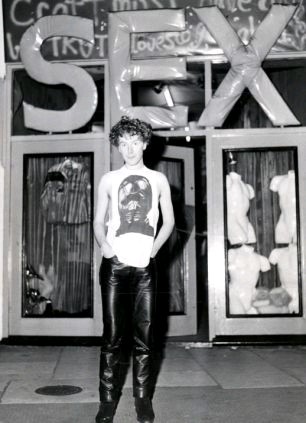
(Source: LiveJournal 2010)
The Punk Style and Its Features
The punk style became immensely popular due to its ability to penetrate every aspect of British societal lifestyles. Notably, the style was comprised of “safety pins, razor blades, bicycles, bondage gear placed on clothing” (Young 1988, p.119). It also involved “spiked dog collar jewelry, outrageous make-up coupled with unique hairstyle” (Young 1988, p.119). She majored in Scottish design as a way of venturing more into traditional garments. Her designs were unusual and largely borrowed from the 18th-century cloth cutting styles.
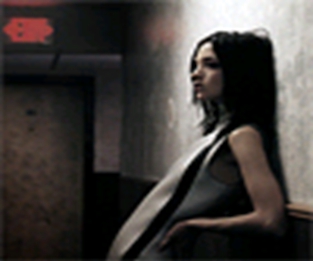
For example, men’s trousers were radically cut and laced with traditional features that made the entire cloth unique and astonishing (Young 1988, p.120). The two worked together and revolutionized the fashion industry, making an enviable impact to date.
The other significant aspect of the punk culture was the culture of “mouthing off’ as it was referred to as by some observers (Hawkins 2009). This culture showed the attitude of the punk adherents. It was very common in public places including the train, buses, high street, and in clubs (Hawkins 2009). Some of the common languages involved swearing, to reflect the general belief that swears words are “more energetic” and sends stronger messages to the recipient, who is subsequently affected by the message contents and intensity (Hawkins 2009, p.178). In this aspect, the discourse surrounding the choice of words and the use of what can be referred to as ‘bad language’, in some cases in the form of defiance or conformity indicated a form of protection of one’s individual or group identity (Hawkins 2009, p.1790. Some of the most common swear words used in punk culture challenged the attitudes of the dominant culture. However, as Hawkins (2009, p.180) states, what one considers as a ‘bad language’ can be considered good by another group, especially if viewed in the dimensions of the minority culture against the majority one. Even the accent can change, hence making the two conflicting cultures demonize each other without apparently knowing exactly what causes the disagreement (Hawkins 2009, p.180).
In Punk culture, McLaren and Westwood had to be a little bit more diverse in their views of the coming trends and popularity of this culture. This was particularly true with McLaren who had seen the possibility of socio-political unrest becoming a common theme of the society (Carr 1992). With his creative partner, he ventured into punk’s outward culture and perpetuated the role of the catalysts in driving the interest of the dissenting voices in society (Carr 1992).
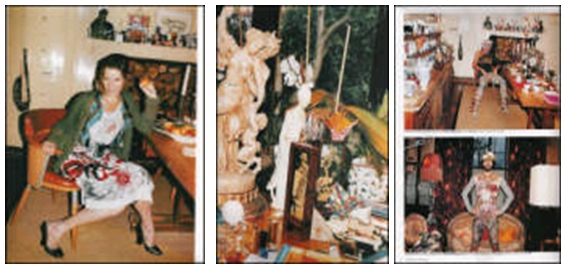
Ethnicity and the Punk Culture
Fashion represents two basic processes of the human imagination. The first one, and considered the most common of all them, is the wearing of clothes that are created in unique combinations to define a particular group’s desired look (Hart 2008). The second reason for the adoption of fashion is for identifying and comprehending a particular social or cultural trend within a particular culture (Hart 2008). In this perspective, individuals associated with particular types of clothes or dressing styles are also linked with specific activities of behaviors in the broader societal aspect such as dancing, being violent, consuming drugs, and many more outrageous activities. Additionally, they are also associated with particular cultural products like music, films, literature, or television programs. This is why it is possible to describe certain cultural commodities as fashionable. It is, therefore, possible to state that fashion is somewhat connected to patterns of consumption, as well as a way in which certain individuals in the community may be described as creative in making their own identity. This they do by buying only specific cultural products like clothes, listen to only specific musical genres, and avoiding others cultural behaviors (Hart 2008).
In many aspects, it is logical to link McLaren’s ethnic background to the success of his punk designs. Described as “Blue-eyed, fair-haired, and square-jawed” (Bangs 2001, p. 206), McLaren was perfectly matched to the perfect feature of a Jew. The unique features are said to have developed into the outrageous designs that he came to be known for. Bangs (2001, p. 209) states, “McLaren could find a solution to his own conflicts over his Jewishness, Englishness, and anxieties over visibility” in the design of his clothes.
Because of his mixed-cultural background, McLaren worked on his own image as a mixed ethnic member. His taking of his father’s name would be described as the beginning of his Jewish orientation. At the same time, his clear ambivalence is seen in the simultaneous way in which he separated himself from both mainstream Jewish and British culture, creating a minority image with the selected groups (Savage 1997, p. 94). In this case, he asserted his Scottish descent. Savage later described McLaren as a chameleon, with his trials of a variety of poses that are suitable for his present environment and situation (p.96). In specific photos, he portrays the image of a proud Jewish working as a salesman. Still, in other images, he represented a cultist, with rock and roll personalities dominating the themes in his designs.
The Punk Style and the Political Environment
While the time punk culture gained the route there were intense political issues associated with it, the imagination of recreating some political events like Nazi could not go down well with other members of the society. MacLaren and his designs were expressly linked to the post-Marxian political practices, portraying an imagery kind of message to the people who purchased and wore the products. In fact, McLaren’s work was full of political symbolism, associated with Nazism. McLaren and Westwood first applied the Swastika imagery, linked to the political events that had taken place before, and their impacts were still largely felt in the society (Stratton 2005). Their work was therefore linked with the rock ‘n’ roll genre of music, which was in itself very aggressive.
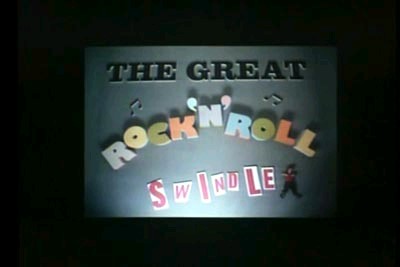
Westwood and McLaren’s association with swastika and anti-Semitism were seen in their role as the makers of the costumes used in the Jewish films (Stratton 2005). By 1976, they had taken to the next level application of swastika. There was the punk rock festival that was organized by the two artists, McLaren and Westwood, and they popularized the culture of punk. This event was held during the month of September in the same year. Later in the same year, McLaren and Westwood applied the use of the swastika on their designed clothes. This kind of design generated a lot of controversies, even among those who worked for them in the ‘Sex’ (Alexander 2004). To confront and justify their interest and beliefs, they gave out the clothes to be worn by people who shared the same or similar philosophy of life and politics. McLaren advised those who would fear confrontation by anti-Nazis to retort that they were positively confronting people who dwelt on the past (Alexander 2004, p.62). The past they talked about was associated with the past wars and Judeocide, as part of the wider societal fear.
In fact, some artists refused to allow their partners to associate their artwork with the Nazis, with the fear of the possible repercussion it will have on the general population who had reservations about its ‘reincarnation’. McLaren used the situation to create a political image in the ‘Sex Pistols’. This was supported by the increased National Front Party’s popularity, a racist party (Young 1988). This party was based on a philosophy to drive away from the non-English people who had moved into the UK since the 1950s. This was to be classified as the real source of English punk rock fit for the then Briton society.
Sex Pistols were later created in a new “classic version in the year 1978”, following events that took place like the Winterland concert held in the first month of that year (Hart 2008, p.77). The same year saw the acceptance of Holocaust film in the US, the larger Great Britain, and other European nations. The film was shown across these nations and in the long run they were collectively referred to as the source of cultural trauma memory.
Basically, the late English version of punk would become part of bands such as Clash, and the Adverts. However, it did not carry with it the level of nihilism that McLaren and Westwood and created in their Sex Pistols artwork (Hart, 2008). The Sex Pistol would only feature remotely after 1978, with a little bit of the two designers’ fantastic and exaggerated desire. Hart (2008) states, punk simply evolved into a local economic protest in Great Britain. Some people have argued that punk style and its radical culture ended when Margaret Thatcher became the Prime Minister of the UK and started championing for the rights of the middle working class who were the majority.
In summary, it is important to note that Punk in the larger Europe and the United States was used to express the socio-political agony that the working class faced. It offered them confidence and hope as a united front in achieving the Euro-American modernity that became the theme of many punk artworks. McLaren and Westwood’s Sex Pistol explicitly shows the destructive nature of its exploitation following the trauma that was associated with political and social oppression.
The Commercial Aspect of Punk
The commercial success of punk style is based on a series of shops run by McLaren and Westwood in the 430 king’s road, London (O’Byrne 2009). The two ventured into the business of selling punk clothing for the people, making it a lucrative business. This is despite the fact that some sociologists of the time ruled out any possibility of punk making any commercial benefits to the people involved (Bangs 2001). This is because there was a general belief that outrageous punk clothes could not be purchased over the counter. Meanwhile, the fact that punk style was developed as an act of creative defiance was seen as one way of making it not-so- saleable cultural product to mainstream society. What made it a worthwhile venture is the fact that their popularity had made them rather expensive. O’Byrne (2009, p.27) recalls that in 1977, “a pair of bondage trousers from Westwood and McLaren’s shop, Seditionaries, cost $50”. This was twice the average young person’s weekly wage in the United Kingdom and was beyond many middle-class workers’ reach (O’Byrne 2009). Even though punk was solely associated with youth movements, punk fashion became an all-ages fashion as time went by, considering the fact that even the pioneer designers McLaren and Westwood were never teenage rebels.
When they first met in 1965, Westwood was a primary teacher as well as operating a jewelry shop on the Portobello Road. Meanwhile, McLaren was still a student of art and by the time they were together, McLaren was a student in various art schools in the UK until 1971. Their commercial venture proceeded when the couple jointly set up a boutique at 430 King’s Road (O’Byrne 2009). Before they took over the shop, it was already being run by Michael Rainy, who named it ‘Hung on You’, before Tommy Roberts took it over and renamed it ‘Mr. Freedom’ (O’Byrne 2009, p.29). The couple subsequently took over the enterprise in 1971, from immediate owners who had further changed its name to Paradise Garage, which was specialized in selling used and new Americana (O’Byrne 2009, p.30). The name ‘Let it Rock’ was figurative and signified the outwardness of their design products, associated with the need to develop a more aggressive culture through artwork and reaping the commercial benefits that come with it. The management of the band Sex Pistol also came forward for McLaren in 1975.
According to Hart (2008), Westwood and McLaren were the 1970s Mary Quant and her husband Alexander Greene (1950s). McLaren is described as the confident impresario, while Westwood did not have faith in her ability to make an impression (Hart 2008). Through their union though, Westwood managed to design clothes after gaining experience through practice. She made and sold design clothes with a more punk style. All that she produced was noted as of quality in terms of materials used and the high standard of finish. To make her products more appealing to diverse groups of the population, she managed to change the name again from Let it Rock to “Too Fast To Live Too Young To Die”, where it specialized in bicker rock items (Barratt 2007). She also switched styles and the shop transformed into ‘Sex’, specializing in leather and rubber clothing that were initially associated with Fetishists. Finally, Sex was later reinvented and given the old name of Seditionaries’ in the year 1977 (Barratt 2007). All these reincarnations would be targeted at the need to appeal to a greater number of potential buyers in the society.
Widely feared especially by the powers that were, punk touched a lot of people’s nerves with the general public following its revolution period spearheaded by McLaren and Westwood. Due to political reasons, singles of ‘God Save the Queen’ and ‘the Sex Pistols’ were not played on the major national radio stations, neither were they stocked to be sold openly on the high street music outlets (Carr 1992, p.31). However, the singles recorded massive sales within the first five days and hit number one in the charts. This surprise sale was reflected in the remarks made by the editor of The Daily Mirror, who said: ‘Such is the new-found and disturbing power of punk- that nothing can stop the disc’s runaway success” (Carr 1992, p.31).

This recorded financial success of punk style was completely unexpected and a lot of entrepreneurs developed a lot of commercial interest. The other aspect of punk was also seen in how it infiltrated mainstream fashion, leading to many people’s belief that punk culture and fashion in particular would continue gaining more devotees.
Social Aspect of Punk subculture in the UK: Music and Attitude
While clothing expressed the outward nature of its devotees, music and attitude played a very significant role in its spread all over Europe and UK in particular. In fact, some of the most significant features of punk subculture other than clothing and jewelry revolved around music, hairstyle, and attitude of the general its adherents (Carr 1992). The 1970s type of subculture was influenced by so many sociological factors in society. Provoked by the gap between the working class and the rich industrialists, Punk was developed into a subculture that defined the oppressed people’s attitude towards societal injustice. This is why the punk subculture that became so popular was in essence intended to help the people come together through appearance identity, interests in music, and attitudes towards the social structure of the society (Carr 1992).
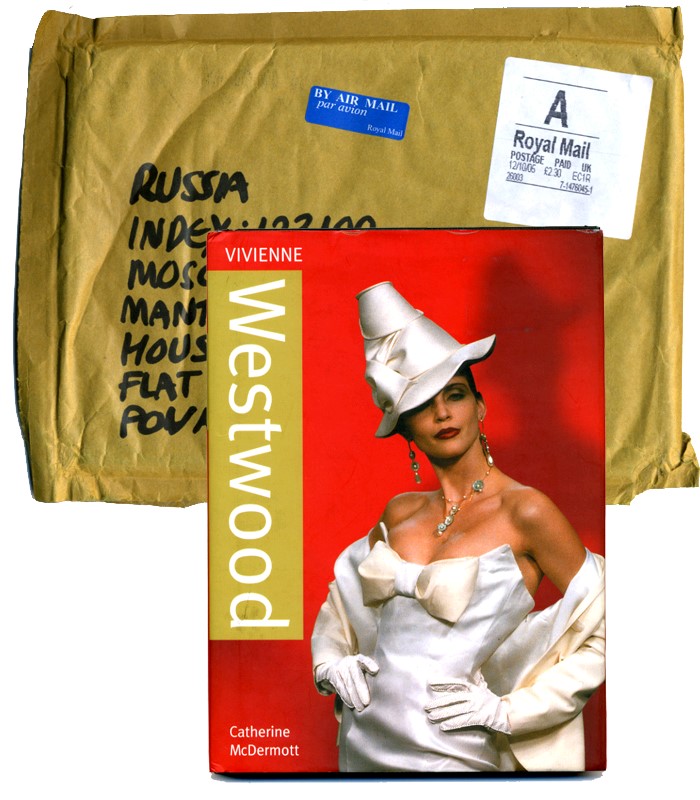
Many scholars have developed a belief that this out-of-this-world attitude and confrontational approach to social issues is what developed into the world’s popular music of pop in the 1970s, supported by the eye-catching but sometimes weird outward dressing codes. It’s therefore seen in the perspective of self-protectionism and incessant approach to issues that seem to threaten our society. This is defined by “the do-it-yourself attitude” of the punk adherents, supported by the rock ‘n’ roll music producers (Savage 1997). Artists like McLaren have been associated with this phenomenal attitude, making and supporting the music of the young with a freestyle lifestyle as well as the attitude of the general population. To spice up the overall attitude issue, the artists in Vivienne Westwood and McLaren popularized torn, dirty, scarred, cruel, segregating dressing styles (Savage 1997). On this note, it is possible to conclude that artists like Westwood and McLaren have managed to put a great image of the other side of the society through observation of the trend and desires of the people as defined by their social demand. These controversial images of torn clothes, aggressive rock ‘n’ roll music linked with middle-class society expressed the attitude of a wounded society with social injustice.
The influence of the music was based on the desire to push for economic balance through democratization. This was the trend supported by McLaren and Westwood’s works design works. Furthermore, it was practically possible for the music and filmmakers to produce their music and films without prior specialized training as the whole process was guided by the desire and strong feelings of belonging.
Conclusion
In many generations that pass with familiar versions of the history of any form of subculture, fashion styles have been built by individual artists in the form of clothing designs, music, language, films, and hairstyles. These outwards expressions are mostly inspired by the political, social, and economic environment of the society. In other words, issues related to politics, gender and race, income variance, and other disjointed social issues in society inspire the genres of fashion styles within a subculture. The most familiar version of any subculture and fashion style indicates that generations of styles and subcultures have been promoted or started by individuals.
Punk is a subculture that emanated in Britain in the mid-1970s. This culture grew from the identification of certain members of the society, the middle working class, who shared common destiny as far as socio-political and economic factors dictated. The punk style was characterized by serious rebellious approaches to lifestyle in terms of dress codes, types of dress, language, hairstyle, music, and films. The two prominent punk designers and entrepreneurs are Vivienne Westwood and Malcolm McLaren, whose works are linked with the rise of the Punk subculture in the 1970s. In fact, a punk culture built through the outward and outrageous nature of Westwood’s designed clothes that she sold in their joint shop with her husband, Malcolm McLaren. Apart from building a strong unit of the sub-cultural group who would protest against the political and social oppression, the two artists cum entrepreneurs managed to transform art into a multimillion venture. This is despite the initial belief that such cultures cannot be commercialized. However, the ultimate goal was built on the foundation of cultural identity and the fight for recognition.
Reference List
Alexander, J. (2004) Cultural Trauma and Collective Identity. Berkeley, University of California Press.
Bangs, L. (2001) Psychotic Reactions and Carburetor Dung. London, Serpent’s Tail.
Barratt, N. (2007) Family detective. London, The Daily Telegraph. Web.
Carr, L. (1992) The Banalization of Nihilism: Twentieth Century Responses to Meaninglessness. Albany, State University of New York Press.
Hart, S. (2008) Ways of Seething: A Record of Visual Punk Practice. Journal of Postmodern Culture, Volume 18, No. 2.
Horyn C. (1999) The Queen of Extreme. The New York Times. Web.
Hawkins, S. (2009) The British Pop Dandy: Masculinity, Popular Music and Culture. Oslo, Ashgate Publishers.
Livejournal (2010) Malcolm MacLaren, Vivienne Westwood and Jamie Reid’s Journal. Web.
O’Byrne, R. (2009) Style City: How London Became a Fashion Capital. London, Frances Lincoln Publishers, pp. 27-33.
Savage, J. (1997) Time Travel: From the Sex Pistols to Nirvana: Pop Media and Sexuality. London, Vintage, p. 91-99.
Stratton, J. (2005) Jews, Punk, and the Holocaust: From the Velvet Underground to the Ramones—The Jewish-American Story. Popular Music, Vol. 24, No. 1, pp. 79-105.
Young, J.E. (1988) Writing and Rewriting the Holocaust: Narrative and the Consequences of Interpretation. Bloomington, Indiana University Press, pp. 119-127.